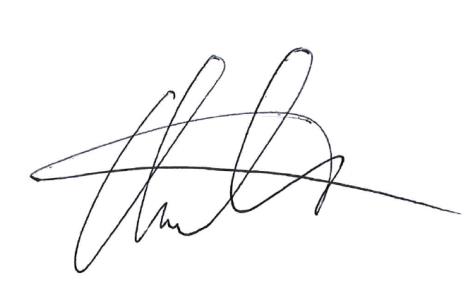Response: OIA2020.28
5 August 2020
To Brent Yardley
Via FYI.org –
[FYI request #13100 email]
Dear Brent
Official information request for information on the new ferries and their emissions
I refer to your official information request 4 June 2020, and copied below -
…
At what point in the design process was it determined that the vessels would be
able to complete three return voyages per day? In other words, has the vessel
design been optimised for efficiency, or was it stipulated that the vessels must be
capable of three return voyages per day?
The total fuel consumption for the Interislander ferries given earlier was 31,342,289
litres. This equates to an average daily production of approximately 267 tonnes of
carbon dioxide. Has the average daily production of carbon dioxide for the proposed
new ferries been calculated? If so, what are the projected emissions?
Given the current level of concern over global warming, the 30-year lifespan of the
ferries, and the hundreds of millions being spent, it seems fair to expect a detailed
report on the emissions aspect of the vessel design. Is there one available?
As you will be aware, from our previous responses, the key component of the iRex project is
to procure two new sister ships which will be bigger, cleaner and more efficient than the
current three ferries, with modern propulsion technologies to improve manoeuvrability,
reduce wave energies and reduce our emissions profile.
At the concept design stage, a number of functional/performance requirements have been
considered in order to ensure that the actual design of the new ships could meet or exceed
the set requirements.
To answer your first question, the concept design includes the specification that ferries will
be capable of three return voyages per day during peak times, although please note that
operational demands are very seasonal. The need for three return trips per day is only likely
to be required during our busy periods of Christmas and Easter, with demand lower over
winter.
The ability for three trips per day will be achieved by optimised hull design and modern
power and propulsion system including Azimuth thrusters which have enhanced capabilities
compared to the existing propulsions systems: including up to 8% better speed and power
performance, better manoeuvrability to assist with docking, and improved comfort for our
passengers.
The modern ferries will also be assisted in the stated aim of three return voyages by
improvements in terminal design to enable 60-minute turnaround times.
 Emissions data
Emissions data
As the ships design is still progressing from the concept design through to the next stages in
the procurement process, the modelling for estimated emissions generated by the new ships
is still being worked on.
However, initial designs for the two new ferries, with diesel electrical hybrid engines, Azimuth
thrusters and on-board batteries, have been projected to consume around 20,500 tonnes of
fuel oil per year (given a standard timetable, and projected number of round trips).
This equates to roughly 66,000 tonnes of CO2 which is a projected reduction of 40% in
Interislander’s CO2 emissions, which for KiwiRail represents a 16% overall reduction in our
emissions.
The modern hybrid propulsion systems feature diesel generators producing electricity to
power the propulsions systems, supply electricity for the ship and charge on board batteries.
The on-board batteries will be used when the ships are entering and leaving port, while at
the berth and in some situations in the Marlborough Sounds.
This will reduce emissions while close to shore, and in the berths making them even more
environmentally friendly. We are also planning to be able to supply electricity from the shore
while at berth to supply the ship’s energy needs and recharge the batteries to further reduce
the amount of diesel usage.
While at this time the best option for powering the propulsion systems are the diesel/battery
mix, the designs are future proofed, with the type of propulsion selected enabling the use of
alternative fuel supplies in the future if they become viable.
Detailed discussions on the proposed designs are included in the RFP technical
documentation; however, these documents are currently withheld under Section 9 (2)(b)(ii)
as the closed RFP process is underway.
More information on the concept designs will be made available when possible.
We trust this answers your query; however, any further questions please get in touch.
You have the right to seek an investigation and review by the Ombudsman of this decision.
Information about how to make a complaint is available at www.ombudsman.parliament.nz
or by calling free-phone 0800 802 602.
Yours sincerely
Dave Allard
Government Relations Advisor, KiwiRail
